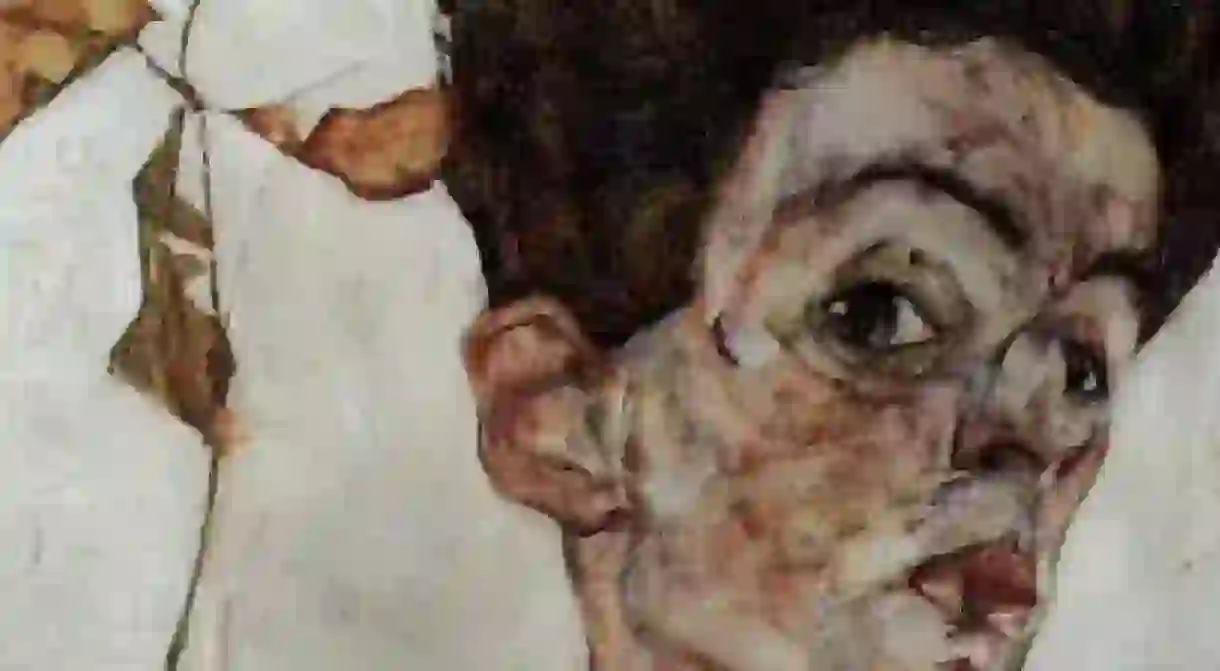The Leopold Museum: A Home for the Art of Fin de Siecle Vienna

Vienna’s Leopold Museum houses the world’s greatest collection of works by expressionist painter Egon Shiele, and serves as one of the most popular destinations in Austria’s capital city. The collection’s founder, Rudolf Leopold, was Egon Schiele’s number one patron after his death and this incredible collection of late 19th to early 20th century Austrian art is testament to the city’s prominent place in the development of European modernism.

Located in Vienna’s museum quarter, the Leopold Museum is a modernist block of Vraza Coquina limestone. The interior of this pristine shell, illuminated by natural light flooding in through the central atrium, contains the masterpieces of fin-de-siècle Vienna, where one can witness those works of art that gave birth to Viennese modernity. This collection of art, the life work of collector Rudolf Leopold (1925-2010), has at its centre the most significant accumulation of works by the renowned expressionist painter Egon Schiele (1890-1918). As the most popular destination within the cultural epicentre of the city, the Leopold Museum also celebrates the secessionist through to the expressionist period with the work of artists like Gustav Klimt, Oskar Kokoschka and Richard Gerstl, as well as acknowledging the inspiration that these figures drew from graphic as well as African, Asian and Oceanic arts. The primary objective of these artists was to withdraw from the stale understanding of traditional art in the embrace of progressive styles.

Vienna at the turn of the century was in a state of flux. The industrial boom that spread across Europe as well as Vienna’s position at the crossroads of the continent, and thus as a centre of trade, brought a mass of people to the capital of Austria. From 1850 to 1900 the population grew exponentially from 500,000 to two million, quadrupling in the span of 50 years. Unable to provide for such large quantities of people, the city left many newcomers to reside in some of Europe’s worst slums.
In the early years of the 20th century many significant cultural and political figures flocked to the city. Sigmund Freud, Karl Kraus, Joseph Stalin, and Leon Trotsky, and an incredible amount of playwrights and novelists would spend long afternoons at one of the many Viennese coffee houses. It was around this time that Freud began to explore his ideas of the unconscious mind, and to embrace the notion that sex is at the centre of all human activity. These ideas permeated the city, and his writer contemporaries became all too intrigued with notions of sex and death.
It was against this backdrop that Egon Schiele entered the city’s artistic landscape. A young Schiele moved to Vienna to attend art school, and soon decided that the conservative institutions that he attended were far too restrictive for his interests. As an alternative to formal education, Schiele sought out the greatest Austrian painter of the period, Gustav Klimt. Klimt became not only a mentor to Schiele, but also a father figure for this artist who had lost his own father to syphilis at age 15.

The influence of Klimt on Schiele’s early work cannot be overstated. Not only did Klimt introduce the young artist to all of his major patrons and include him in important exhibitions, but the two used the same prostitutes as models, and both Schiele’s figures and landscapes echo the forms of those of his mentor. In later years, the experience of the Great War began to influence his output. Likewise, a notable series of paintings expresses the confinement of the prison cell, works he made while spending a brief period in jail for his depiction of what the authorities called pornography. His artistic output as a whole is famed for its intensity, perversity, and its deep sexuality. When in 1918 Influenza led to Schiele’s tragic death at the age of 28, he was seen as one of the most important artists of the time.
The Leopold museum has in its holdings 41 paintings and 188 works on paper made by this early 20th century master. Rudolf Leopold first came into contact with the artist’s work in 1950, and became immediately fixated by them for their strong, decisive lines and emotional potency. Spanning from the mid 19th through the mid 20th centuries, the collection illustrates the transition from the historicism of the Habsburg Empire to the distinctive style of the Wiener Moderne. Also included is a series of works from the interwar period by artists like Albin Egger-Lienz, Anton Kolig and Herbert Boeckl, which begin to introduce styles that would come to prominence in the second half of the 20th century. The eighth floor is dedicated to the design of Wiener Werkstatte, which complements the display of secessionist and expressionist works with furniture, silver, glass and jewelry. Finally, African, Asian and Oceanic art claims a place in the museum for its anti-academic, indigenous qualities that provided much inspiration for European modernists at large.
Rudolf Leopold died in 2010 as the director of the collection. His appreciation for the art of Vienna has greatly benefited the city, leaving behind his unique lifework to be appreciated by all.













